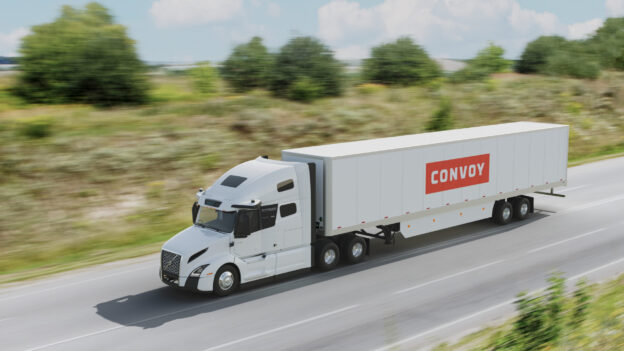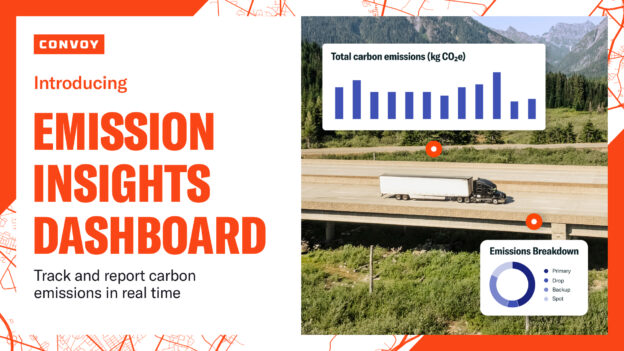How The Retail Industry Is Working To Become More Sustainable
Shippers, Sustainability • Published on December 1, 2020
Sustainability impacts all businesses around the globe in some fashion, but when you look at the retail industry in particular, it shares five core environmental sustainability issues: 1) natural resources in the supply chain, 2) environmental impact of products, 3) energy and greenhouse gases, 4) chemicals and toxics, and 5) waste.
While no one company can find a steadfast resolution to all of these issues immediately, some of the industry’s leading retailers are making bold moves at combating one or a few of them.
As part of our Business of Sustainability interview series, we reached out to the retail industry’s top sustainability leaders to gain insights on how their companies are working to address these issues.

Sustainability Commitments Should Be Reflected In Sourcing
According to Thomas Heckroth, Director of Strategic and Responsible Sourcing at Stitch Fix, “From my experience in sustainability, it’s a challenge if you’re not able to take your sustainability commitments or the work that you’re doing in responsible sourcing and tie that to the actual sourcing decisions. If there is a disconnect between those then it can feel like you’re doing a whole bunch of good work in responsible sourcing and it’s not translating through to the product you’re putting out. So, the thing that I love about the way Stitch Fix was approaching this was that we were tying those things together and making sure that those decisions work in tandem.
Let Sustainability Drive Product Innovation
Christine Riley Miller, Director of Sustainability at Samsonite notes, “We are a product company first and foremost. We are the largest manufacturer and distributor of lifestyle bags and travel luggage brands. So, it’s really about how we look at product innovation, material sourcing through the lens of sustainability. How do we design for repairability and durability? How do we design for recyclability? How do we improve the efficiency across our manufacturing and distribution centers? What can we do to retain world class employees? We look at everything that we do through that lens of sustainability and it has helped us reduce our carbon footprint by 6.6 percent globally. Since 2017, we’ve launched more than 50 collections that have some type of sustainable material in that our use of recycled PET has enabled us to divert more than 52 million plastic bottles from the landfills.”
Build Sustainability Into A Company’s DNA
“Grove doesn’t sell products that don’t have a sustainability offering, states Danielle Jezienicki, Director of Sustainability, at Grove Collaborative. “Everything you see on the site, whether it’s a Grove-made product from one of our own brands or one of our third-party brand partners, it has sustainability baked into the offering. Grove products are really designed with waste reduction in mind to be plastic free or to help you reduce your carbon footprint at home. Sustainability is baked into the value proposition of the brand where helping customers reduce their footprint at home, use safer products for their families and enabling them to live their values. Consumers wanted clean hair or clean counters, we didn’t want single use plastic clogging up the oceans. We didn’t ask for that.”
Work With Brand Partners To Pursue Sustainability
Mia Davis, Director of Environmental and Social Responsibility at Credo Beauty observes that brands have a lot more control over the products they make than a retailer. “As a retailer, we have to make sure we’re working really closely with these brand partners to empower them to learn more about the tenants of clean as we see it and make sure they are going back to their suppliers asking hard questions about the supply chain so that customers can come in and have a really high degree of confidence that clean means something.”
Design With Sustainability In Mind
“We really try to think innovatively when we design and try to be as sustainable as possible,” observes Annie Agle, Senior Director, Corporate Social Responsibility at Cotopaxi. “A lot of our products are designed to eliminate waste by using fabric scraps that would otherwise end up in the landfill. When that’s not possible, we use repurposed materials in other ways, or recycled materials, or natural fibers so we really try to design to the problem rather than just sort of addressing it further downstream. For example, our Del Día line uses remnant scraps, which was really done in conjunction with the supplier who was sitting on all of its remnant materials from other outdoor brands. It really becomes part of this more circular mindset where we can say, ‘Well, we can do something unique. Let’s feed the anti-basic. Let’s learn how to design a backpack using scraps. No one’s done that before. And maybe if we do it, bigger players out there can try to do it too.’”
Establish KPIs To Measure Your Company’s Sustainability Impact
According to Julie Verdugo, Director of Sustainability + Social Impact at Free People, “Impact can look like so many different things. Kilograms of CO2, saving a number of bags hitting the landfill, a number of volunteer hours, an increase in wage for certain workers. Your KPIs are basically a massive impact tracker of lots of different metrics and lots of different forms of impact. Tracking is very important and it’s also motivating. It is internally motivating because you don’t always see the change to say here is where we were and here’s where we’ve gotten. We had a paper reduction initiative that we started internally. It feels very small, but every day we discussed the whys behind keeping things digital. We set goals of saving trees for pages not printed and as everyone started to think a little bit differently, we noticed we were saving a couple of trees a week. And sharing that information with the employee base motivated them further and then we saw an increase, in reduction over time and this is a very small example of understanding the importance of sharing the progress, internally and externally as well because the customers are asking for it.”
Don’t Forget To Address Product Packaging
Tiila Abbitt, Founder & CEO of Aether Beauty is resolute about focusing on packaging. “Recognize there is a huge disconnect between the formulation of a product being good for you and the single use packaging it comes in. While something you produce can be clean and healthy and good for the consumer, quite often the packaging it comes in goes straight to the landfill and is therefore not good for the environment. Question everything that goes into both your product AND the packaging. While you might be focused on the ingredients which go into the product being safer, cleaner, greener, etc., most companies never look at their packaging through the same lens.”



